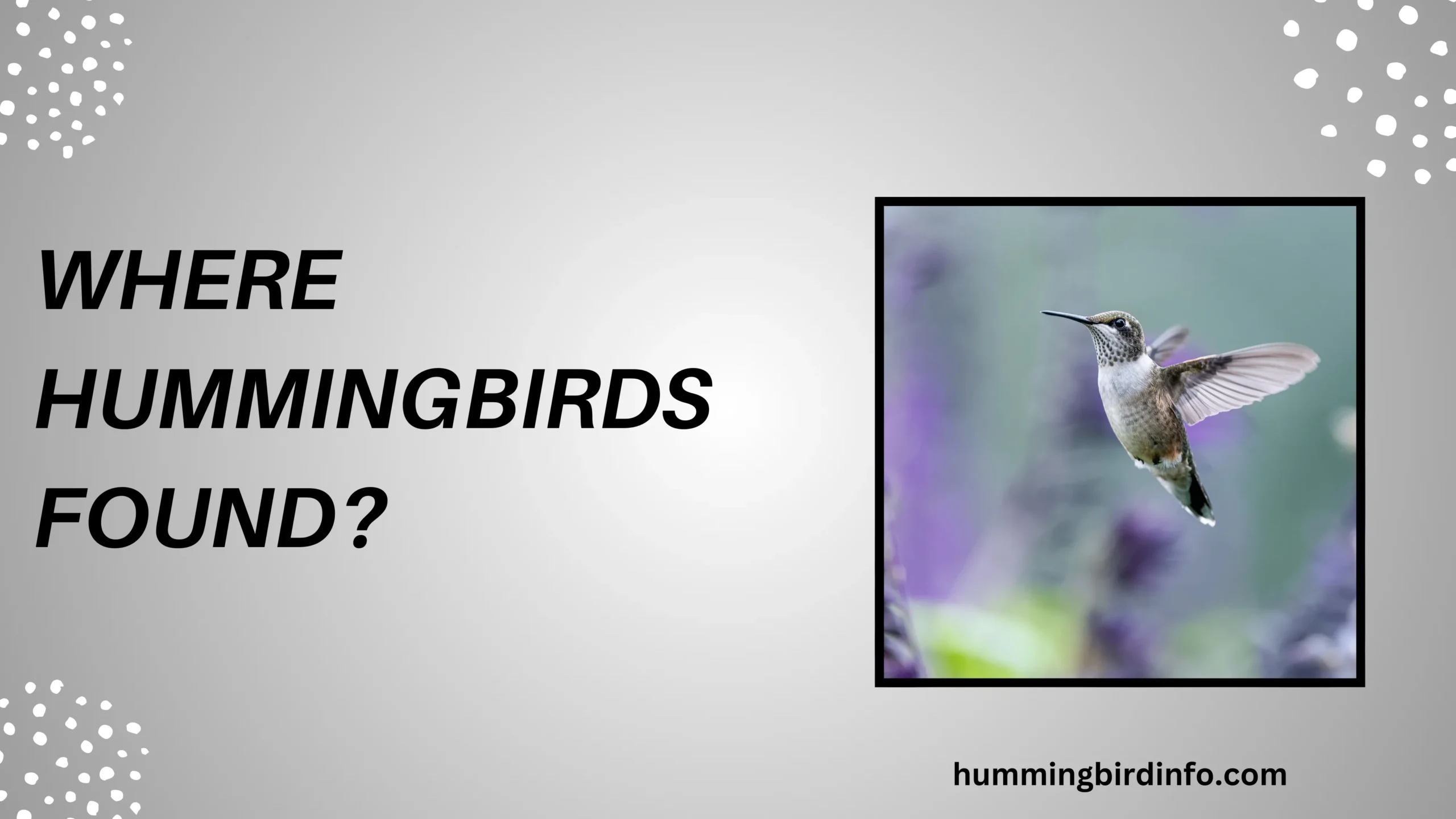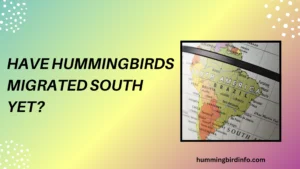They flit through gardens like living jewels, their wings a blur, their colors shimmering in the sun. Yet few people realize just how rare and geographically unique hummingbirds really are.
Found nowhere else on Earth but the Americas, these tiny birds have carved out a kingdom of air stretching from the tip of South America all the way to the edge of Alaska.
Understanding where hummingbirds live is not just about pinning species on a map. It’s about exploring the deep connection between habitat, climate, and evolution.
Their distribution reflects millions of years of adaptation to specific plants, temperatures, and landscapes—and is now being reshaped by human activity and climate change.
This blog post uncovers the fascinating geography of hummingbird life. From the cloud forests of Ecuador to urban feeders in California, we’ll explore the factors shaping their global spread, regional hotspots, and what their presence means for conservation and ecological research.
By the end, you’ll see these tiny fliers not just as garden visitors—but as key players in one of the most dynamic ecosystems on the planet.
Contents
South America — The Hummingbird Heartland
South America is the undisputed center of hummingbird diversity, home to nearly half of the world’s known species. These birds flourish here due to the continent’s complex geography, especially the Andes Mountains, which provide a range of altitudes and microclimates.

The Andean Cloud Forests are a hotspot of endemism, where species like the Sword-billed Hummingbird thrive. These forests offer unique conditions of humidity, temperature, and floral diversity not found elsewhere.
In the Amazon Basin, hummingbirds such as hermits and sylphs occupy various levels of the canopy. Each species is adapted to a distinct layer of the forest, from the sun-drenched tops to the shadowy understory.
The Guianan Shield, an ancient and stable region of northeastern South America, also supports unique hummingbirds that are specialized for this old ecosystem. Some are found nowhere else on the planet.
Finally, the Atlantic Forest in Brazil, though greatly diminished, hosts threatened endemics like the Black Jacobin. Its biodiversity value is enormous, and conservation here is vital for many rare species of hummingbirds.
Central America — A Bridge of Biodiversity
Central America acts as a biological bridge between the hummingbird-rich South and the species of the North. It holds a mix of southern species, northern migrants, and unique regional endemics.
This narrow stretch of land is home to rainforests, cloud forests, and tropical highlands, providing a wide array of microhabitats. These environments allow hummingbirds to exploit niche floral resources across altitudes.
In Costa Rica, for example, more than 50 species of hummingbirds can be seen, including the Fiery-throated Hummingbird in high elevations. It’s a top ecotourism destination due to this remarkable diversity.
Panama, especially in its highland forests, is another key region. It supports species overlap between North and South American lineages, offering insight into evolutionary dispersal patterns.
Southern Mexico, particularly Oaxaca and Chiapas, features rich ecosystems that host both Neotropical and Nearctic hummingbirds. Many species here have restricted ranges, adding to the region’s conservation priority.
North America — Pushing the Boundaries
Compared to the tropics, North America has fewer hummingbird species, but it plays a crucial role in their seasonal movements and ecological dynamics.
Several species here are migratory, breeding in temperate regions and flying south during winter. This makes timing and habitat availability critical for their survival.
The Ruby-throated Hummingbird, for example, breeds widely across eastern North America, then migrates over the Gulf of Mexico to Central America. It is the most familiar species to many backyard birders.
On the Pacific coast, Anna’s Hummingbird is one of the few species to remain year-round, even in urban gardens. Its adaptability to feeders and ornamental flowers has helped it expand its range.
Other western species like Calliope, Rufous, and Broad-tailed hummingbirds breed in mountainous areas and migrate to Mexico and Central America, guided by flower availability and climate cues.
Habitat Specificity Across the Range
Altitude plays a major role in shaping hummingbird distributions. In the Andes, species exist in tight elevational bands, each tied to distinct vegetation zones and microclimates.
Some are forest specialists, thriving in dense rainforests or montane cloud forests. These birds often rely on specific plant species and may be vulnerable to deforestation.
Others favor open country—grasslands, scrublands, or desert environments—where they forage on sun-loving flowers and often have broader home ranges.
Riparian zones—the edges of rivers and streams—are also key habitats, offering both water and blooming plants. These areas are magnets for species like the Violet-crowned Hummingbird.
Finally, a few species, like Anna’s and Black-chinned, have adapted to urban life, feeding from backyard feeders and thriving in areas with flowering ornamentals.
What Shapes Where Hummingbirds Live
The relationship between hummingbirds and nectar plants is a result of long-term coevolution. Certain species are only found where their preferred flowers grow.
Climate—including temperature, rainfall, and seasonal shifts—determines the availability of food and nesting sites. Extreme cold or heat limits where hummingbirds can thrive.
Geographical barriers such as mountains, deserts, and oceans prevent species from expanding into new territories. These barriers help define distinct regional faunas.
The evolutionary history of hummingbirds began in South America, and they gradually spread northward. This history helps explain why the highest diversity remains in the Neotropics.

Changes in climate and human land use are now causing range shifts, with some species expanding and others contracting, depending on their adaptability and mobility.
Conclusion:
Hummingbirds are found only in the Americas, and their greatest diversity lies in the tropical landscapes of South America. From the cloud-draped peaks of the Andes to the gardens of suburban North America, their range is a testament to adaptation.
Understanding where hummingbirds live helps scientists protect them in the face of climate change and habitat loss. Distribution data aids in identifying key conservation zones and in planning restoration efforts.
These vibrant birds are more than a marvel of biology—they are ecological indicators, pollinators, and threads in a vast environmental tapestry. To know their world is to appreciate not just birds, but the balance of life they reflect.
FAQs
1. Are hummingbirds found all over the world?
No. Hummingbirds are found only in the Americas, from Alaska to Tierra del Fuego. They are absent in Europe, Africa, Asia, and Australia.
2. Which country has the most hummingbird species?
Ecuador holds the record, with over 130 species. Its diverse topography and climate zones support many endemic birds.
3. Can you find hummingbirds in the United States?
Yes, especially in the western and southern parts. Species like the Ruby-throated, Rufous, and Anna’s Hummingbird are common.
4. Do hummingbirds live in rainforests?
Absolutely. The Amazon and Central American rainforests are rich in specialist species adapted to those environments.
5. Why don’t we see hummingbirds in Europe?
Hummingbirds evolved in the Americas and never spread to other continents due to geographical isolation and lack of dispersal mechanisms.
6. Where do hummingbirds go in winter?
Many migrate south to Mexico, Central America, or northern South America where food is available year-round.








